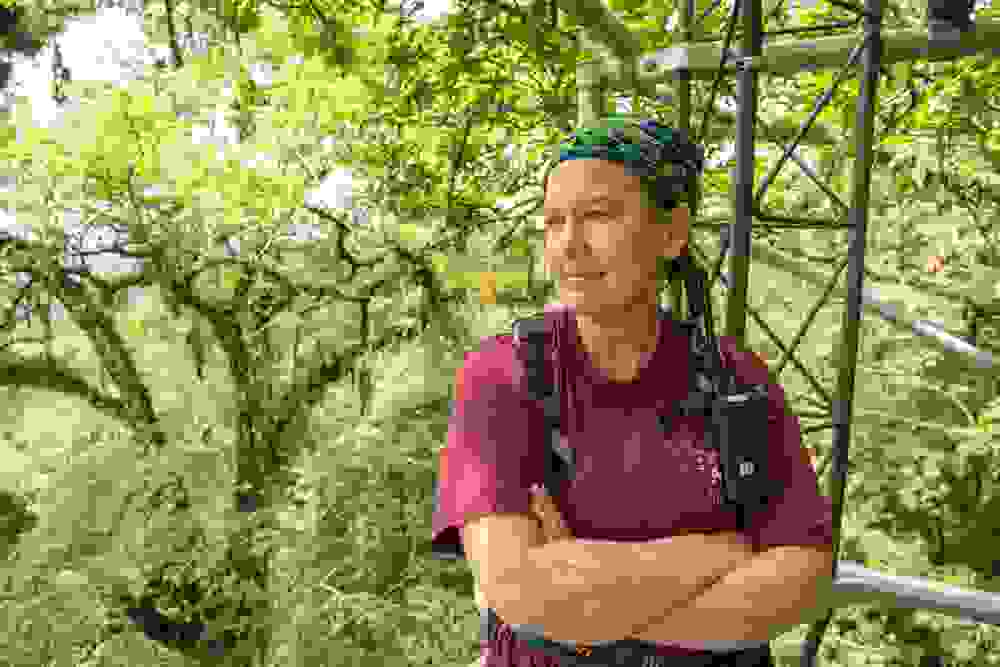Trees, like people, need to “drink” a lot of water. But trees are more than just water users; they are an integral part of the water cycle.
As the National Oceanic and Atmospheric Administration points out, the water cycle is often taught as a simple circular cycle of evaporation, condensation and precipitation. Water evaporates from water bodies such as oceans, rivers and lakes; condenses in the sky; and then returns to the ground as rain or snow. A key element sometimes underplayed or skipped altogether is transpiration.
Transpiration is the evaporation of water from plants, including trees, and it accounts for most of the water transferred from the ground into the sky in the water cycle.

“Transpiration matters because it is the biological water use,” summarized Dr. Georgianne Moore, professor in Texas A&M University’s Department of Ecology and Conservation Biology. “It’s the water that gets used for good. If it’s not the people drinking it, then the plants should use it to grow.”
Moore explained that “atmospheric demand” drives how much water is going to move from the soil through the plant and into the atmosphere.
“Water moves from a wetter place to a drier place, and the air is drier than the plant, and the plant is drier than the soil. Usually. When the air is dry enough, it is demanding water to move into that place, so that is the atmospheric demand,” she said.
Atmospheric demand is more technically called the vapor pressure deficit. Simply put, it is the difference between how much moisture the air, at a given temperature, can hold if it was fully saturated (i.e. dew point) and what it currently holds.
Dr. Luiza Aparecido, a postdoctoral research associate at Arizona State University's School of Life Sciences and a former doctoral student of Moore’s, summarized the role of trees in the water cycle through transpiration by describing them as pumping water from the ground into the atmosphere. There are several things that can impact a tree’s ability to do this, however.
“If trees aren’t healthy or the forest that they are in is under stressful conditions like high temperatures or lack of moisture in the atmosphere or in drier soil conditions, they will not be pumping water back into the atmosphere, which will regionally affect the water cycle,” Aparecido said. “Overall, if you account for every place where the trees are under stress, you’re going to have an effect on the whole global and regional water balance.”
Besides tree health, countless other factors can influence how a tree can influence the water cycle. Details of the leaves — their size and shape, how many there are, whether they are waxy or covered in hairs called trichomes — and the shape of the canopy can have an impact on transpiration. Age and size of the tree can also have an impact on how much water a tree can take up from the ground.
“There’s a million different scenarios where you can say that two trees that look alike don’t use water the same way,” Moore said. “We understand all the drivers of why. It’s well documented and well understood, but sometimes it’s hard to model.”
Dr. Brad Wilcox, professor in ecology and conservation biology, also noted that how much trees will contribute to the water cycle depends on numerous factors outside the tree as well.
“The answer to that is going to depend upon the climatic characteristics, specifically how much rain. It’s going to depend upon what kind of soil you have. It’s going to depend on soil texture. It can depend on geology. It can depend on trees’ proximity to the groundwater table,” he said.
Wilcox noted that another way trees impact the water cycle in addition to transpiration is they can change how water interacts with the soil. Moore also spoke about this, describing it as working like a physical filter.
“The roots hold the soil together,” Moore explained. “That’s keeping soil from letting go of particles but also the plants are converting the nutrients in the soil to an organic form that’s less likely to wash away, so they hold the nutrients in place instead of letting them wash away and pollute.”
Trees can also have an indirect impact on the water cycle because they can impact the temperature in an area.
“We depend a lot on these trees to create a cooling effect. If you take trees out of the ecosystem, you start having a lot of heat due to less water in the surrounding air and less shade,” explained Aparecido, who is planning to begin a new postdoctoral project on mitigating the effect of “heat islands” in urban settings.
“Heat islands are effects occurring in cities due to the accumulation of heat from bare surfaces, pollution and not having as much arborization in an area,” she added. Increased arborization — having more trees — can help mitigate the effect of heat islands by both providing shade and the cooling effect of transpiration.
Aparecido said she wished people knew how important trees are.
“People might also only think about trees as shade and carbon sequestration, but I don’t think they know that trees are crucial to the water cycle. When people think of the water cycle, they automatically think of river evaporation and lake evaporation and forget that the water in the soil and in the atmosphere all goes through trees.”


